Sourdough Pain au Chocolat
These sourdough pain au chocolat feature dark chocolate enclosed in a light and flaky pastry case.
This recipe for sourdough pain au chocolat is an adaption of these Sourdough Croissants. The laminated dough is naturally leavened with a sourdough starter.
Although these sourdough pastries are commonly called sourdough chocolate croissants, they aren’t technically croissants. ‘Croissant’ means crescent and refers to the crescent shape that croissants commonly have.
A pain au chocolate is not a chocolate crescent. But shapes aside, it uses the same sourdough laminated dough base.
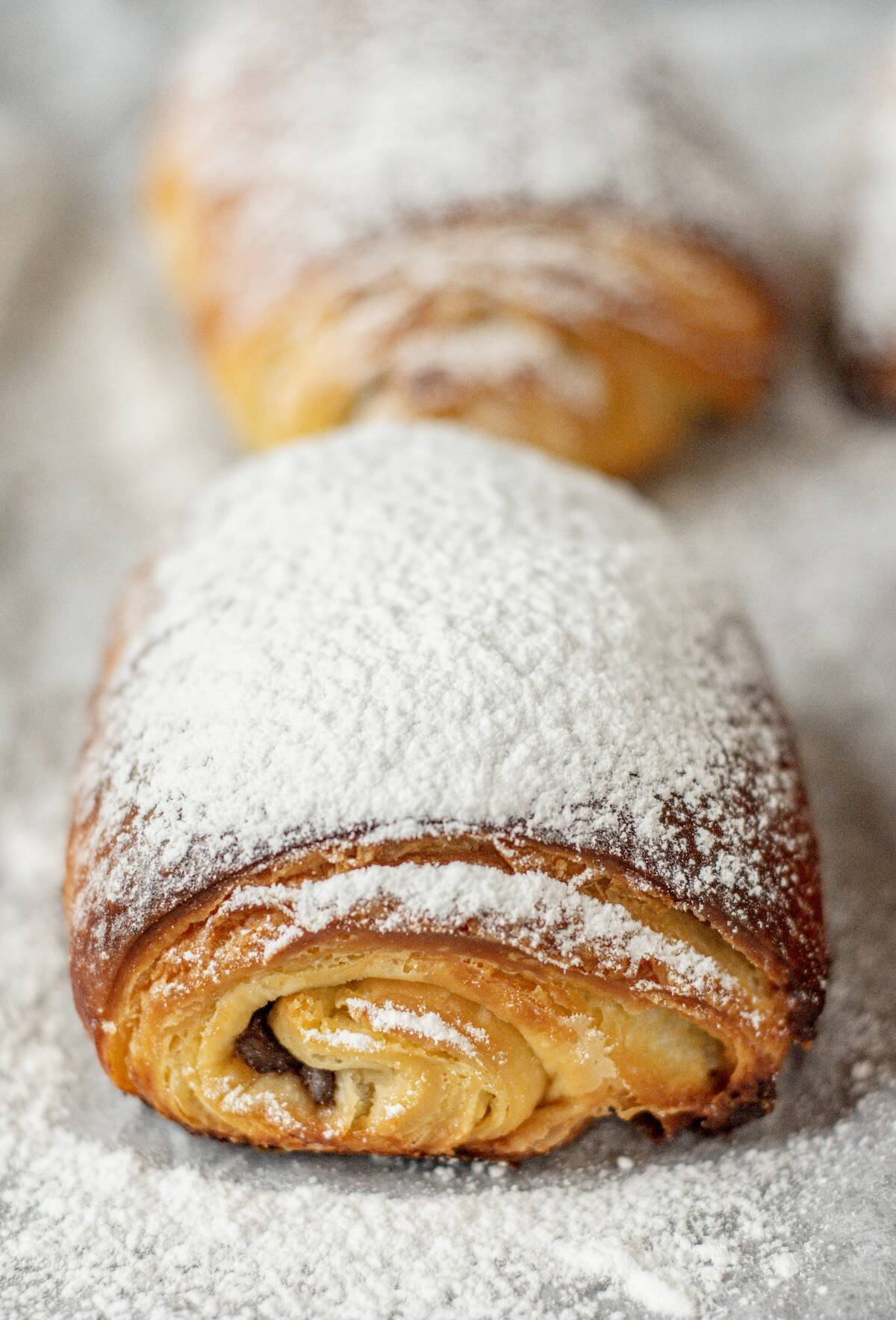
Laminated dough
Laminated dough is when cold butter has been rolled into a dough, in layers. The butter stays cold in the layers as the dough is rolled out. This means the butter doesn’t melt into the dough, and when it is later baked it rises and creates the flaky layers we so love in pain au chocolat, croissants, and other pastries.
These sourdough pain au chocolat are best made in an environment where the room temperature is not too hot. The trick to flaky layers in the dough is to keep the butter cool as it is rolled into the dough. If it melts into the dough, it won’t be laminated correctly.
If your room temperature is above 77°F/25°C you will struggle to keep the dough and butter cool.
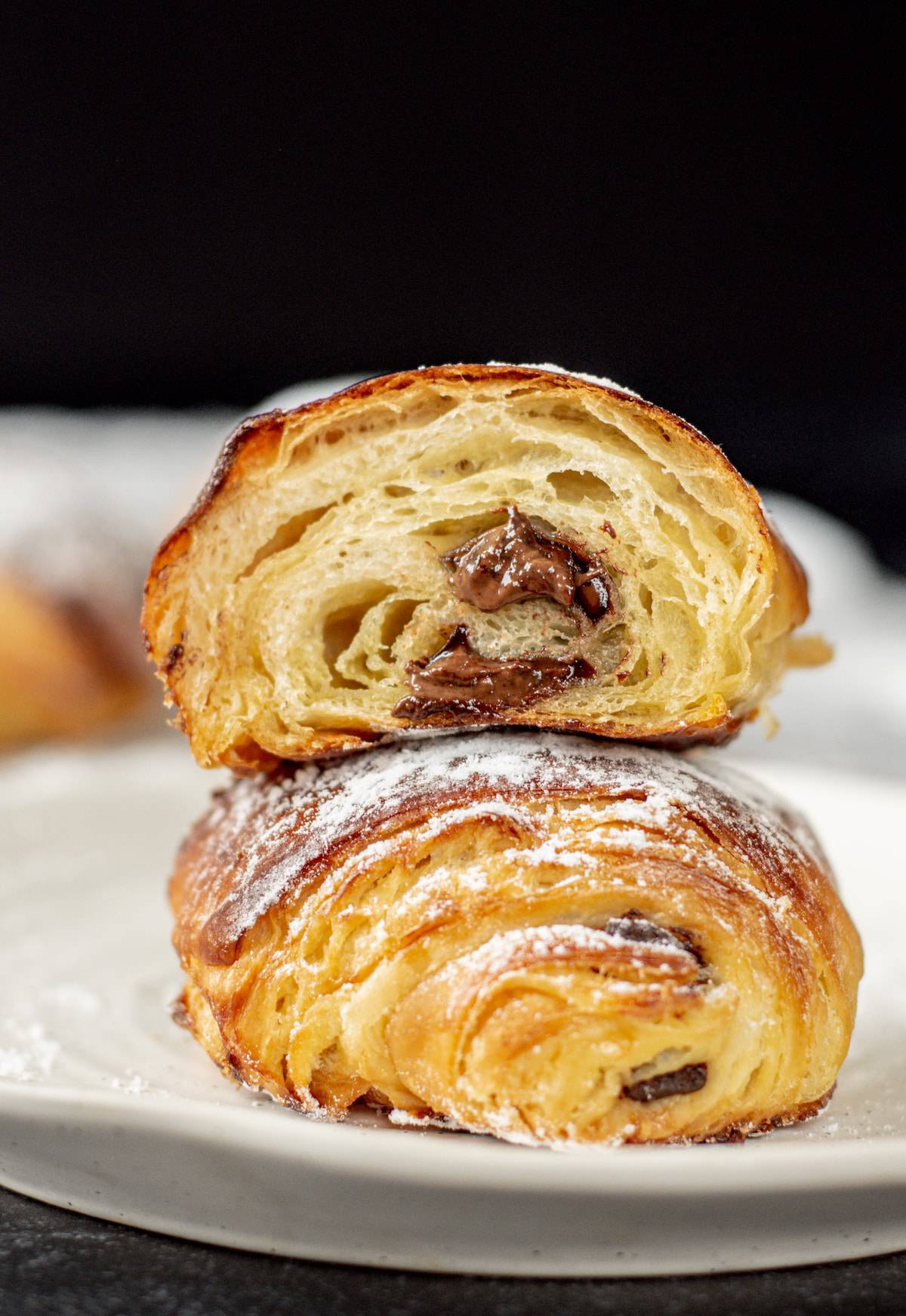
Baker’s schedule
Here is an overview of the timings used to make these pain au chocolat. The timings can be tweaked to suit your schedule.
Day 1
- 8am– feed your sourdough starter
- 2pm – mix the dough
- 2:30pm – 6pm – ferment the dough in a warm spot for 3-4 hours
- 6pm – Refrigerate overnight
Day 2
- 8am – 10am – laminate the dough
- 10am – 11am – chill the dough for at least 1 hour*
- 11am – shape
- 11:15am – 3:15pm – proof for around 4 hours in a warm spot**
- 3:15pm– bake
*The dough can be refrigerated longer once it has been laminated, even overnight again. On the morning of day 3, it can be shaped, proofed, and baked.
** The shaped and proofed pain au chocolate can also be refrigerated, to be baked straight from the fridge the following morning.
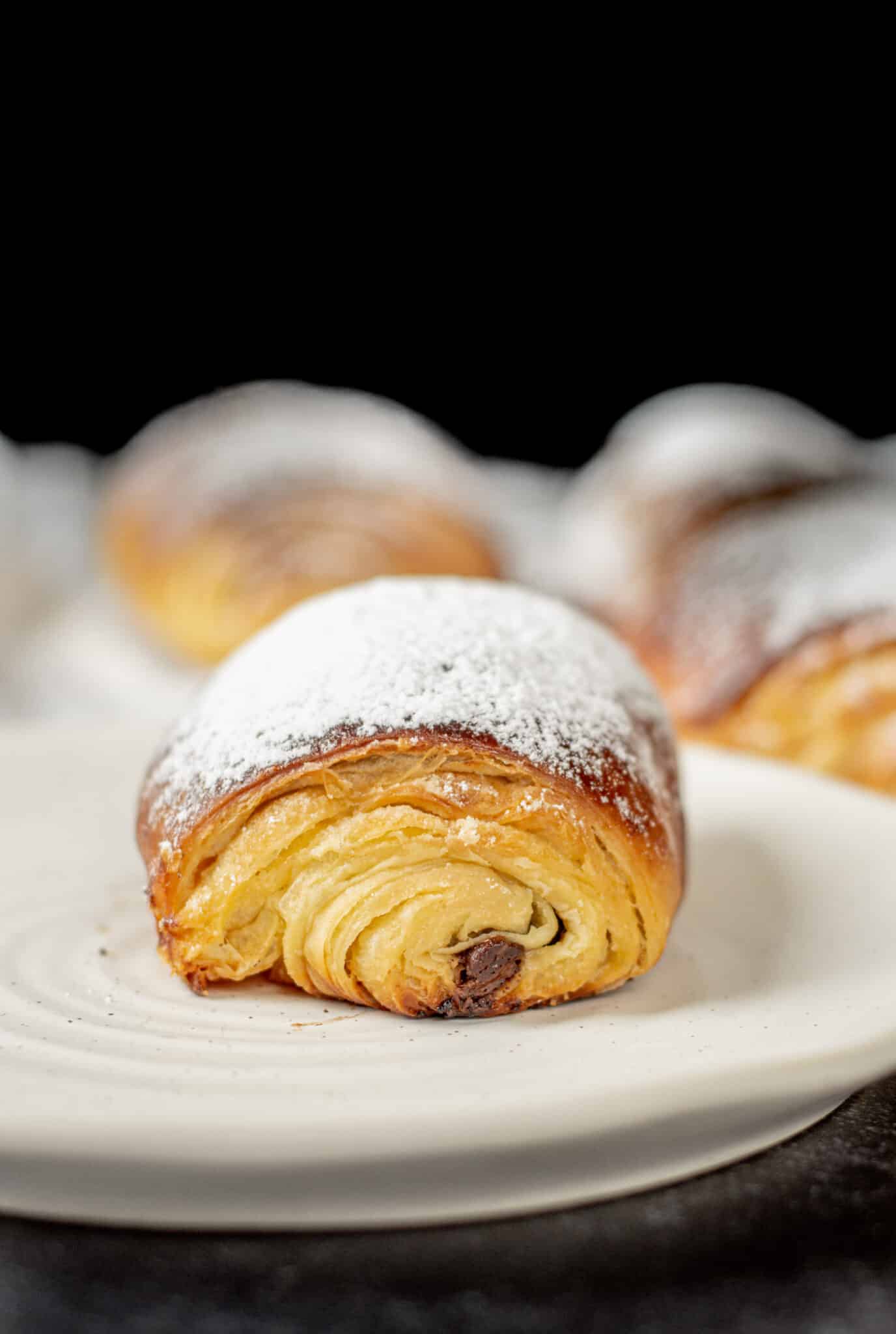
Ingredients
For these sourdough chocolate croissants, you will need
- All-purpose flour
- Butter – Unsalted is best, but if you only have salted, you can reduce the added salt in the recipe a little.
- Sourdough starter
- Granulated sugar
- Water
- Chocolate – Use chocolate batons or use a good qaulity semi-sweet chocolate, chopped into pieces
- Egg – to brush the pastries with prior to baking
- Powdered sugar for servig
Sourdough starter
These are pain chocolat made with sourdough starter so the first thing you’ll need is an active starter. You’ll need 150 grams of fed and active sourdough starter at 100% hydration for these sourdough chocolate croissants.
100% hydration means there are equal weights of flour and water used when feeding the starter.
To get great and consistent results it’s important that you use an active starter that has a low acid content. If you refresh your starter regularly and use a small amount of seed starter each time, this can slow the acid build-up.
I use a feeding ratio of 1:2:2, (1 part starter, 2 parts flour, and 2 parts water measured in weight)I refresh my starter like this very often, in a clean jar. This brings a fairly small amount of seed starter into the new mix, with double the amount of fresh flour and water.
For this dough, it could be 35g starter, 70g flour, and 70g water. This will make approximately 175g starter. 150g can be used for the dough and the remaining starter can be fed again 1:2:2 and stored in the fridge for the next time you need it.
At a room temperature of around 74°F / 23°C, a starter that’s ready will double, if not triple, easily within 6 hours at that ratio. Ensure that you use your starter before it passes its peak and starts to collapse.
The method
The dough
When the starter is ready to use, mix together the flour, water, sugar, sourdough starter, and salt in a bowl to create a shaggy dough. Tip the dough onto a floured workbench and knead it into a ball. Knead in the room temperature butter. This is going to make the dough sticky.
Keep kneading and slapping the dough down on the bench for 5-8 minutes to create a smooth and soft dough ball. It will still be a bit sticky.
Place it in a greased bowl and cover it with a lid, plastic wrap, or a damp tea towel.
Leave the dough to ferment for around 3 hours, ideally at room temperature between 23-25°C/74-77°F. If your room is cooler than this, leave it for 4-5 hours. The dough should be a bit puffier after the ferment.
Afterward, transfer it to the refrigerator overnight. At this point, leave out 250 grams of butter for tomorrow’s step so it is at room temperature for when you need it.
The butter packet
Mix 250g of room temperature butter with 1 1/2 tablespoons flour to create a butter mixture that is nice and malleable.
Roll this butter mixture out between two sheets of parchment paper into a 6x8inch (15 x 20cm) rectangle. Place the butter in the fridge for around 10 minutes to cool. Ensure it is cool but still pliable.
If the butter is too cold and stiff, it’s going to shatter in the dough when it’s rolled out which can create uneven layers. Aim for the butter and the dough to be similar consistencies. Gauging the exact temperature of the butter packet, so that it is a similar consistency to the dough is something that gets better with practice.
Laminating
On a floured bench, roll out the chilled dough into an 8x16inch (20x40cm) rectangle.
Remove one sheet of parchment paper from the butter packet and place the butter in the middle of the dough. Remove the second sheet of parchment paper. Bring the top of the dough down and the bottom of the dough up to meet in the middle and tuck in the butter.
Turn the dough a quarter turn. Use a rolling pin to gently push on the dough to help disperse the butter.
Top Tips – The butter should just be cool but not rock hard. Keeping the butter and the dough at similar consistencies is key. If the butter is too firm and brittle it won’t incorporate into the dough well. However, ensure it doesn’t warm and softens too much. Cold butter is what will give the flaky layers in the pastry If the butter melts into the dough, you’ll end up with bread-like croissants with no layers.
Fold 1
Roll this dough out into a rectangle that’s around 20inches/50cm in length. While rolling, check that the dough isn’t sticking to the bench and dust with flour if it is. Aim to lengthen the dough as opposed to making it wider, and don’t push down too hard. Just gentle rolling. Once rolled, fold the dough up like a pamphlet.
Fold the dough like a pamphlet by bringing the top third down to the middle and then bringing the bottom third up overtop.
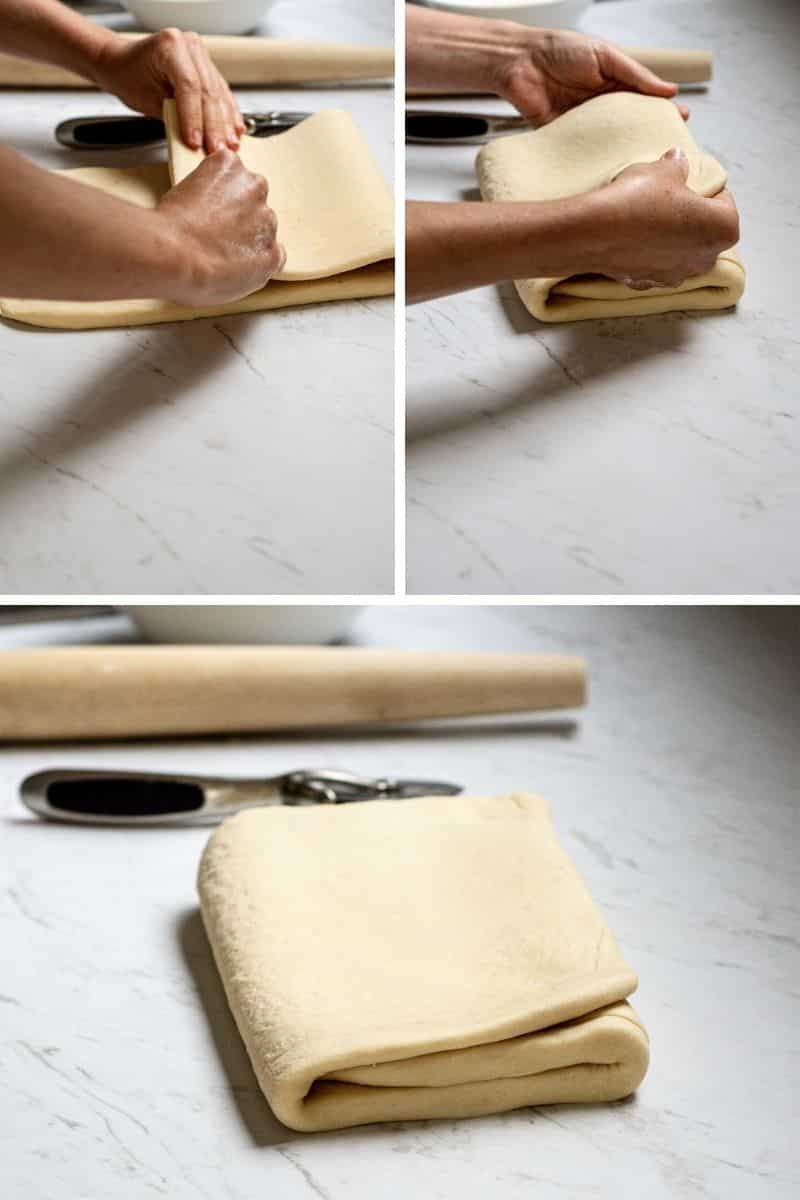
Wrap the dough up using the parchment paper used for the butter place it in the fridge for 20-30 minutes. If your kitchen is on the cold side, the dough can rest on the bench.
Fold 2
Turn the chilled dough 90 degrees and roll it out in front of you into another 20inches/50cm rectangle. At this point, you can cut off any scraggly edges, which will help give you more even layers later on.
If you feel the butter is too hard and it’s cracking as you roll, leave the dough to sit at room temperature for 10 minutes, then continue rolling.
Repeat the folding process. Place it back in the fridge for 20-30 minutes.
Fold 3
Repeat this step once more. After this fold, chill the dough for at least an hour.
Shaping
Cut the dough into 2 and keep the half you’re not using in the fridge.
Roll half the dough into an 8x20inch (20x50cm) rectangle. Cut the dough widthwise into five strips.
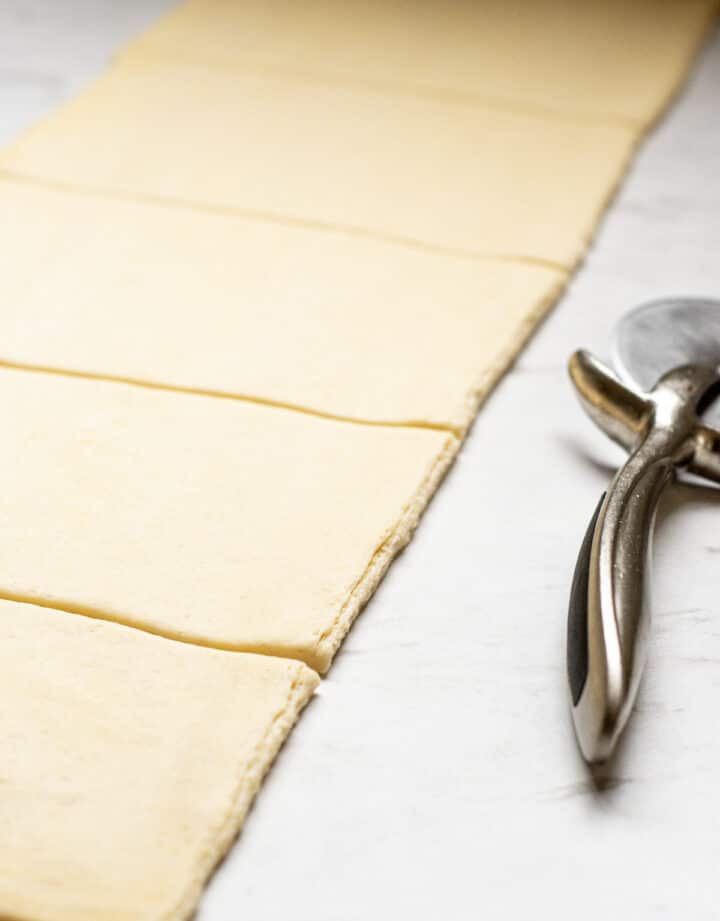
Place a little line of chocolate at the end of a strip and fold it over once to enclose the chocolate. Add another line of chocolate and fold it over, then continue rolling it all the way up.
Continue with the remaining dough strips, then repeat with the other dough half.
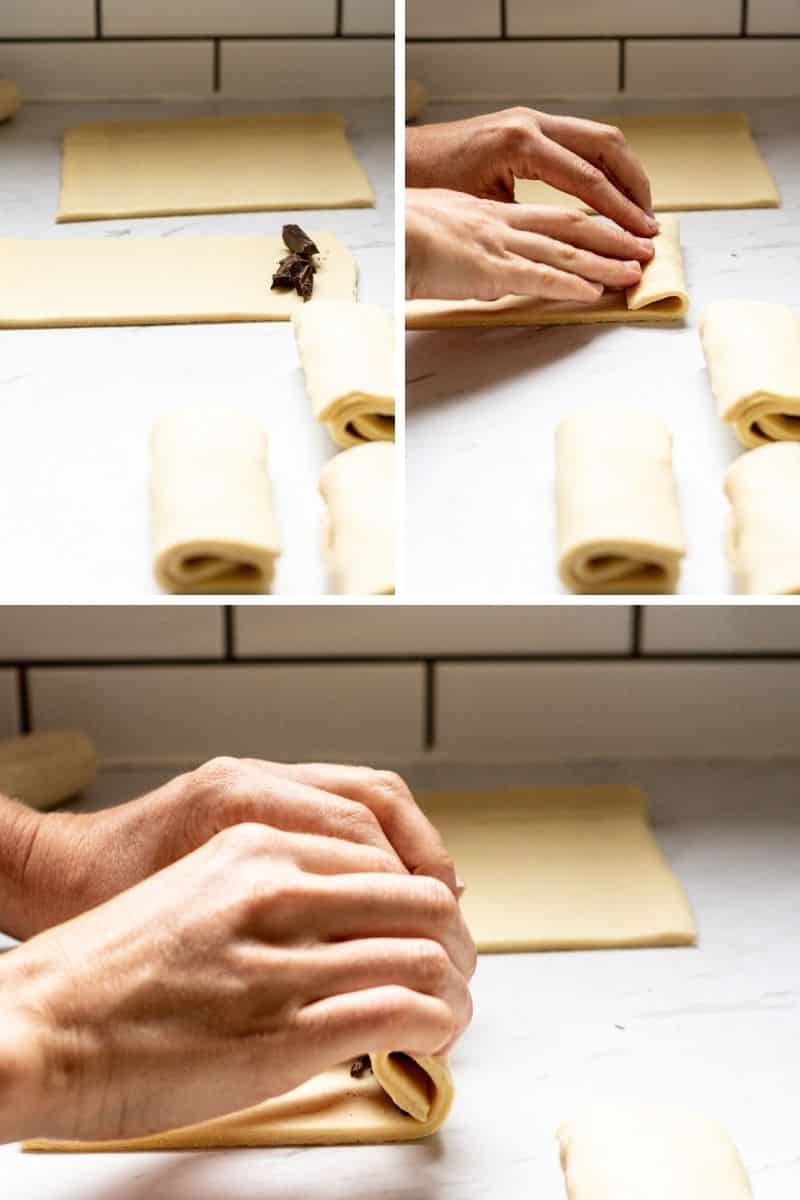
Proofing
The pain au chocolat now needs to proof until puffy. This is a very important step. Underproofed croissants and pain au chocolat will result in dense pastry, leaking butter, and a ‘raw’ dough texture.
Leave the pain au chocolat to proof on parchment paper-lined trays for around 4 hours at a temperature between 23-25°C/74-77°F (no higher or the butter will melt). They should become puffy and jiggle when the tray is gently shaken. The layers in the croissant should be visible.
You can brush the pain au chocolat with a little water to stop them from drying out or create a humid and warm spot by placing a cup of hot water in a turned-off oven and placing the croissants in there.
Ensure the butter in the dough doesn’t melt or it will ruin the layers.
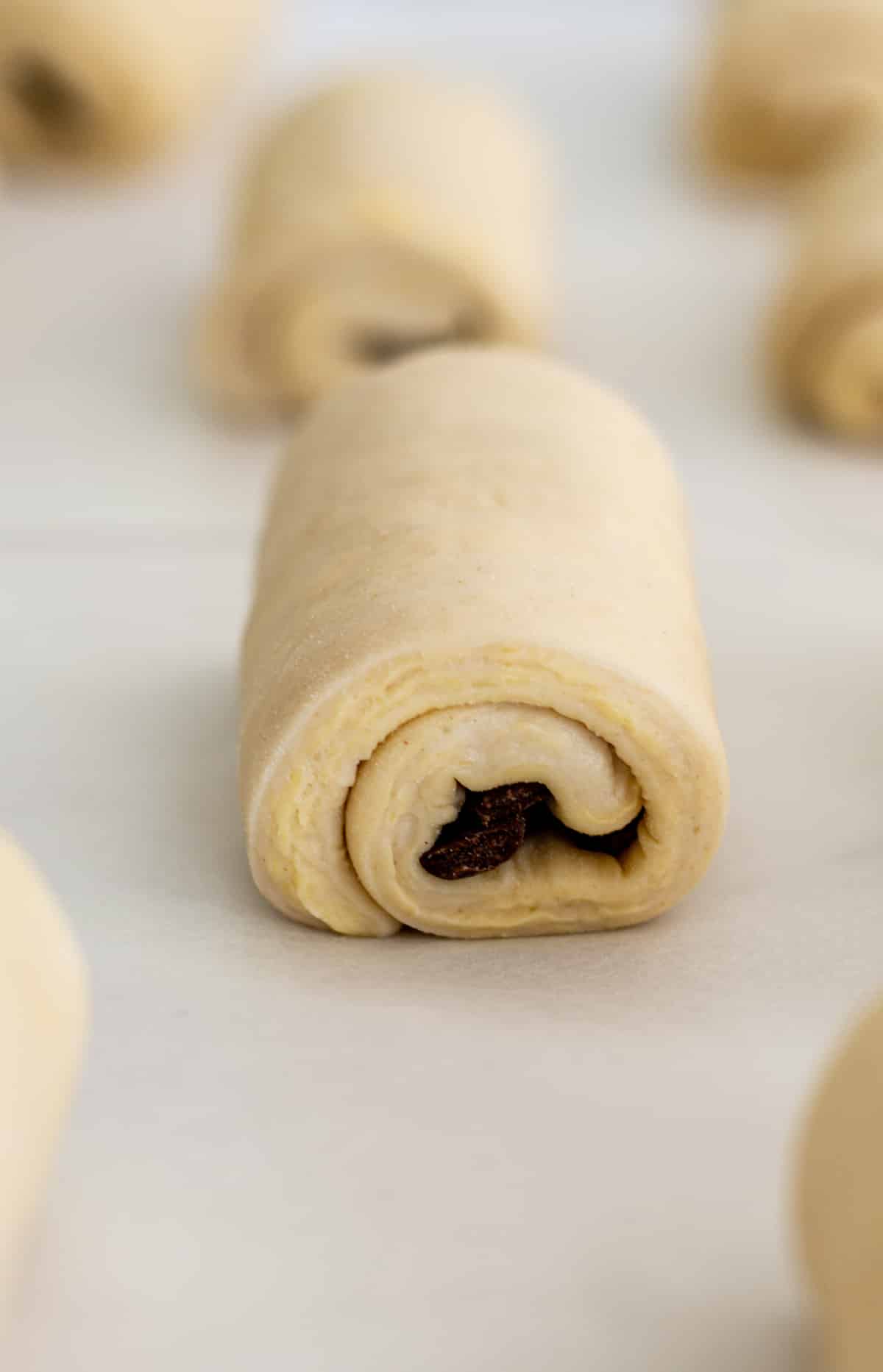
Baking the Pain au Chocolat
Once proofed, preheat the oven to 205°C/400°F.
Once the oven is at temperature, brush the pain au chocolat with a layer of egg wash.
Bake them for approximately 20-22 minutes until deep brown.
Once baked, let them cool for 10 minutes and dust with icing sugar.
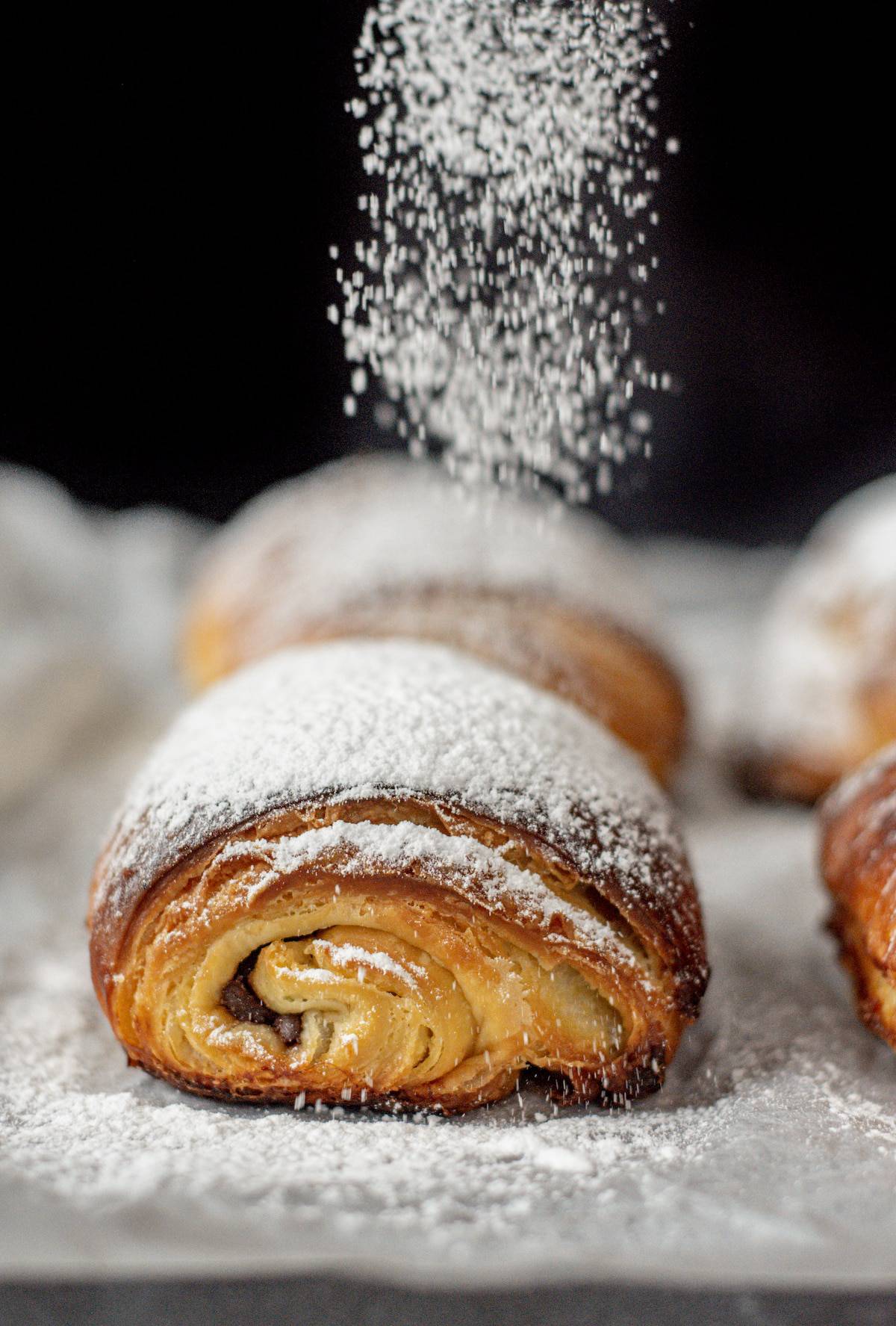
Storing
Leftover pain au chocolate can be stored at room temperature for up to 4 days. They can be rewarmed in the microwave or in the oven.
Freezing
Unbaked pain au Chocolat can be frozen after they have been shaped and proofed. This way they have already done all their rising and can be baked from frozen.
Love laminating dough? Try this inverted puff pastry!
Related recipes
Looking for some starter discard recipes? Try sourdough pizza dough, sourdough chocolate banana bread or sourdough blueberry pancakes!
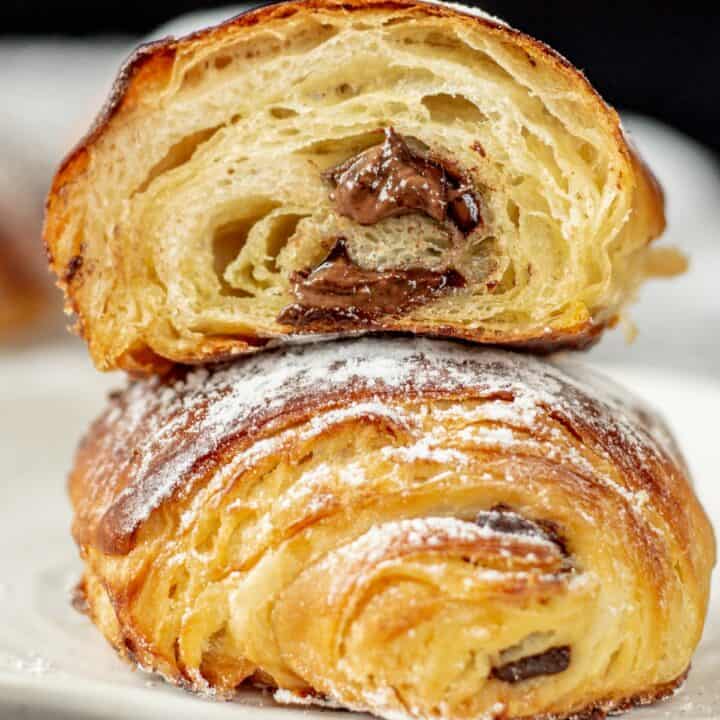
Sourdough Pain au Chocolat
These sourdough pain au chocolat feature dark chocolate enclosed in a light and flaky pastry case.
Ingredients
Sourdough Starter - This makes approx 175g fed starter of which 150g will be used in the recipe.
- 35g starter
- 70g all-purpose flour
- 70g water
Dough
- 450g all-purpose flour
- 220ml water
- 150g fed and doubled sourdough starter
- 50grams sugar
- 8grams salt
- 40g unsalted butter, room temperature
Butter packet:
- 250 g unsalted butter, room temperature
- 20g all-purpose flour
Chocolate Filling
- 180g chocolate batons, or chopped semi-sweet chocolate
Egg Wash
- 1 egg + 1 tablespoon water
- Powdered sugar to serve
Instructions
Starter
- In the morning feed your starter by combing the starter, flour, and water in a bowl and mixing it until well-combined. Tip it into a clean jar or glass and let it double or triple.
Dough
- When the starter is ready to use, mix together the flour, water, sugar, sourdough starter, and salt in a bowl to create a shaggy dough. Tip the dough onto a floured workbench and knead it into a ball. Knead in the room temperature butter. This is going to make the dough sticky.
- Keep kneading and slapping the dough down on the bench for 5-8 minutes to create a smooth and soft dough ball. It will still be a bit sticky. Place it in a greased bowl and cover it with a lid, plastic wrap, or a damp tea towel.
- Leave the dough to ferment for around 3 hours, ideally at room temperature between 23-25°C/74-77°F. If your room is cooler than this, leave it for 4-5 hours. The dough should be a bit puffier after the ferment.
- Afterward, transfer it to the refrigerator overnight.
Butter packet
- Mix 250g of room temperature butter with 20g flour to create a butter mixture that is nice and malleable.
- Roll this butter mixture out between two sheets of parchment paper into a 6x8inch (15 x 20cm) rectangle. Place the butter in the fridge for around 10 minutes to cool. Ensure it is cool but still pliable.
- If the butter is too cold and stiff, it’s going to shatter in the dough when it’s rolled out which can create uneven layers. Aim for the butter and the dough to be similar consistencies. Gauging the exact temperature of the butter packet, so that it is a similar consistency to the dough is something that gets better with practice.
- On a floured bench, roll out the chilled dough into an 8x16inch (20x40cm) rectangle.
- Remove one sheet of parchment paper from the butter packet and place the butter in the middle of the dough. Remove the second sheet of parchment paper. Bring the top of the dough down and the bottom of the dough up to meet in the middle and tuck in the butter.
- Use a rolling pin to gently push on the dough to help disperse the butter.
- Top Tips - The butter should just be cool but not rock hard. Keeping the butter and the dough at similar consistencies is key. If the butter is too firm and brittle it won't incorporate into the dough well. However, ensure it doesn't warm and softens too much. Cold butter is what will give the flaky layers in the pastry If the butter melts into the dough, you'll end up with bread-like croissants with no layers.
Fold 1
- Roll this dough out into a rectangle that's around 20inches/50cm in length. While rolling, check that the dough isn't sticking to the bench and dust with flour if it is. Aim to lengthen the dough as opposed to making it wider, and don’t push down too hard. Just gentle rolling. Once rolled, fold the dough up like a pamphlet.
- Fold the dough like a pamphlet by bringing the top third down to the middle and then bringing the bottom third up overtop. Wrap the dough up using the parchment paper used for the butter place it in the fridge for 20-30 minutes. If your kitchen is on the cold side, the dough can rest on the bench.
Fold 2
- Turn the chilled dough 90 degrees and roll it out in front of you into another 20inches/50cm rectangle. At this point, you can cut off any scraggly edges, which will help give you more even layers later on.
- If you feel the butter is too hard and it's cracking as you roll, leave the dough to sit at room temperature for 10 minutes, then continue rolling.
- Repeat the folding process. Place it back in the fridge for 20-30 minutes.
Fold 3
- Repeat this step once more. After this fold, chill the dough for at least an hour.
Shaping
- Cut the dough into 2 and keep the half you’re not using in the fridge.
- Roll half the dough into an 8x20inch (20x50cm) rectangle. Cut the dough widthwise into five strips.
- Place a baton or a little line of chopped chocolate at the end of a strip and fold it over once to enclose the chocolate. Add another line of chocolate and fold it over, then continue rolling it all the way up.
- Continue with the remaining dough strips, then repeat with the other dough half.
Proofing
- The pain au chocolat now needs to proof until puffy. This is a very important step. Underproofed croissants and pain au chocolat will result in dense pastry, leaking butter, and a ‘raw’ dough texture.
- Leave the pain au chocolat to proof on parchment paper-lined trays for around 4 hours at a temperature between 23-25°C/74-77°F (no higher or the butter will melt). They should become puffy and jiggle when the tray is gently shaken. The layers in the croissant should be visible.
- You can brush the pain au chocolat with a little water to stop them from drying out or create a humid and warm spot by placing the pain au chocolat in a cold oven next to a cup of hot water. (Don’t place the water under the tray or it’ll warm the bottom too much.)
- Ensure the butter in the dough doesn't melt or it will ruin the layers.
Baking
- Once proofed, preheat the oven to 205°C/400°F.
- Once the oven is at temperature, brush the pain au chocolat with a layer of egg wash.
- Bake them for approximately 20-22 minutes until deep brown.
- Once baked, let them cool for 10 minutes and dust with powdered sugar.
Leftover pain au chocolate can be stored at room temperature for up to 4 days. They can be rewarmed in the microwave or in the oven.
Notes
The dough can be refrigerated longer once it has been laminated, even overnight again. On the morning of day 3, it can be shaped, proofed, and baked.
The shaped and proofed pain au chocolate can also be refrigerated, to be baked straight from the fridge the following morning.
Unbaked pain au Chocolat can be frozen after they have been shaped and proofed. This way they have already done all their rising and can be baked from frozen.
Nutrition Information:
Yield: 12 Serving Size: 1Amount Per Serving: Calories: 518Total Fat: 26gSaturated Fat: 16gTrans Fat: 0gUnsaturated Fat: 9gCholesterol: 71mgSodium: 282mgCarbohydrates: 64gFiber: 2gSugar: 24gProtein: 7g
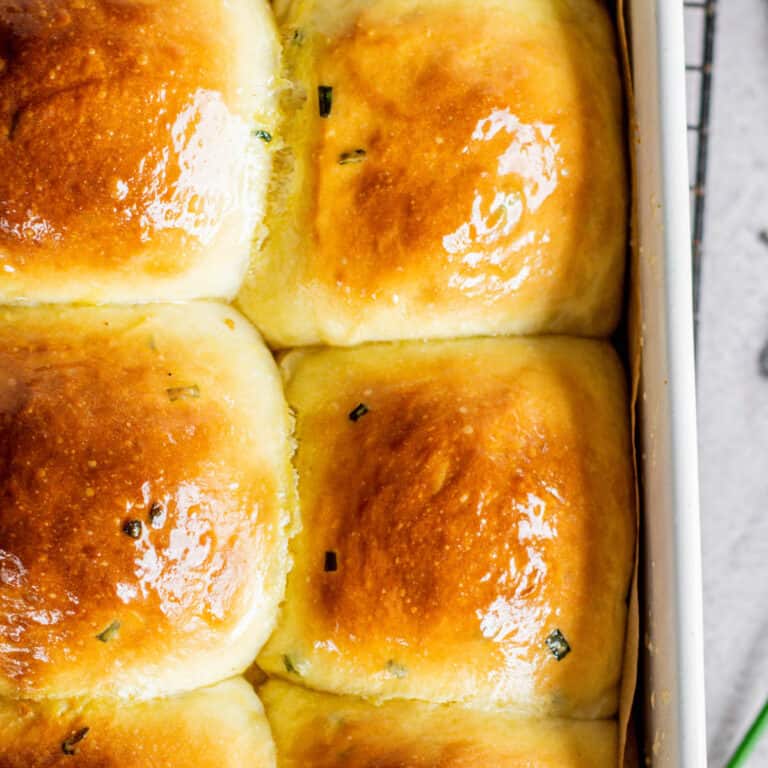
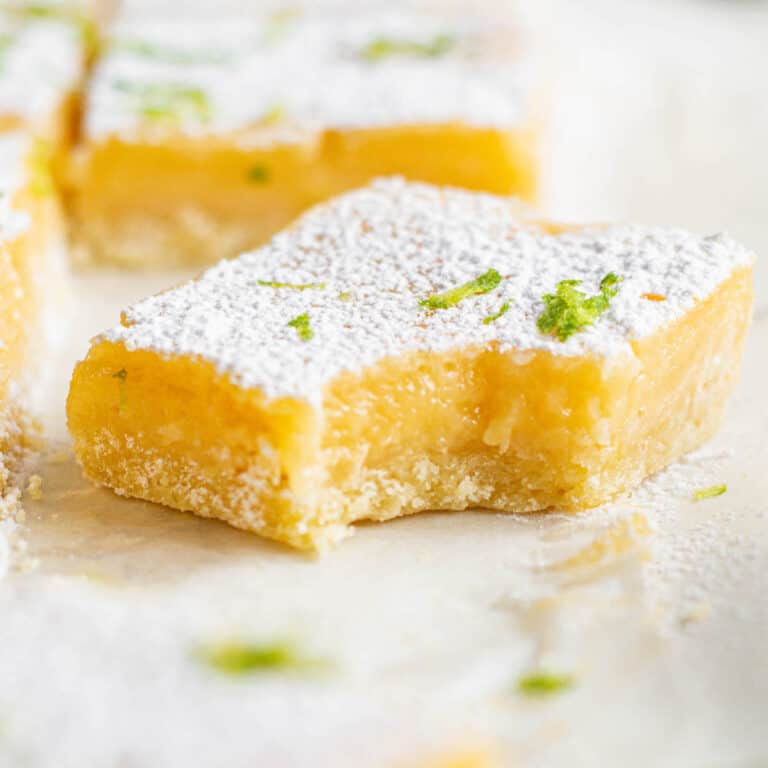
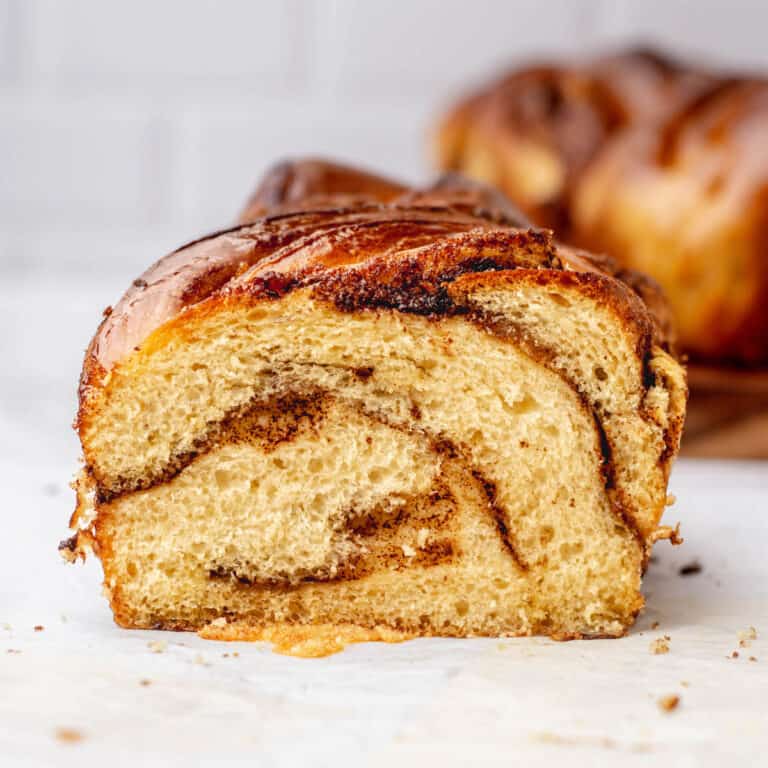

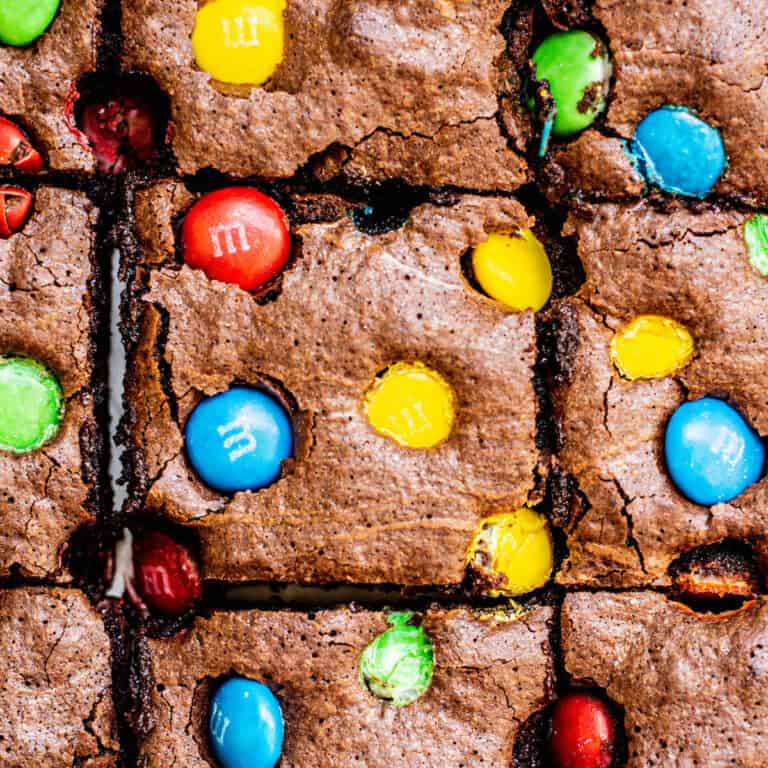
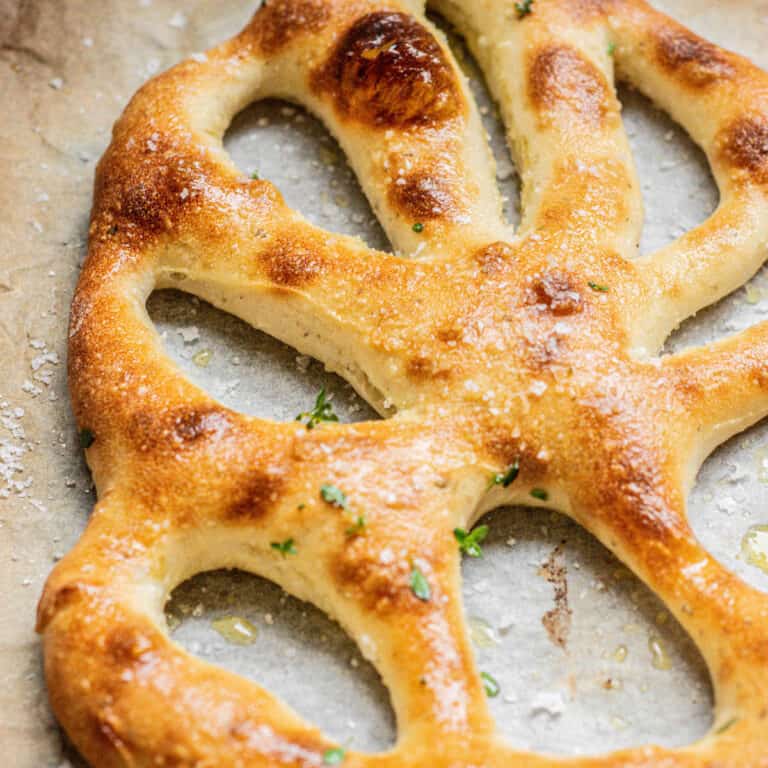
Hi, if you freeze the proofed pain au chocolate do you take them out and thaw before cooking or? Or straight from the freezer to the oven, cooking for how long? Thanks
Heya you don’t need to thaw them first. Bake for approximately 20 minutes 🙂
Hi again, what is the minimum time for the overnight fridge proof on day 1? I am doing a different timing and will be putting in the fridge at 11.30am. Thanks
Has anyone ever tried using vegan butter here with success??
I’ve had success with Earth Balance sticks, so anything similar should suffice.